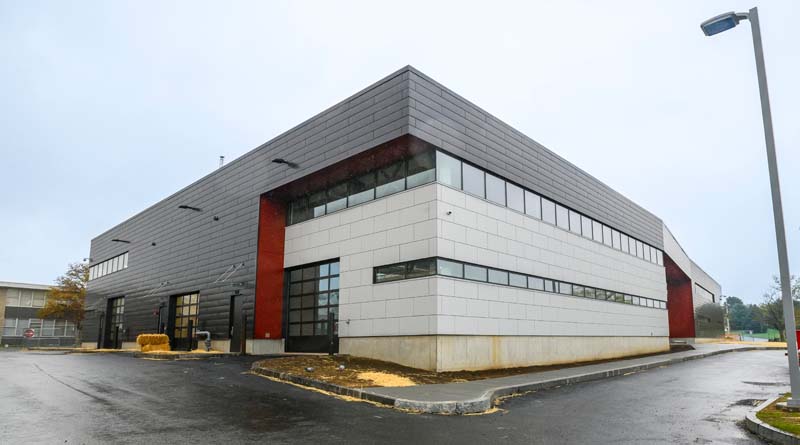Hudson Valley CC Training Facility to Wrap Construction This Year
By Aziza Jackson
TROY, N.Y. — The Gene Haas Center for Advanced Manufacturing Skills (CAMS) will be a $14.5 million state-of-the-art training and education facility on Hudson Valley’s Troy campus.
CAMS is envisioned as a one-stop hub to support employee training and recruitment. The building’s design provides corporate partners with access to offices and conference space adjacent to faculty offices, student classrooms and labs. Facilities will be available for corporate demonstration purposes, shared training activities, meetings and events that connect the college to its workforce partners more than ever before.
Troy-based architecture firm Mosaic Associates designed the 37,000-square-foot facility that is expected to be completed this year.
To make CAMS a reality, public sector and private industry investment was crucial. In early 2015, the Hudson Valley Community College Foundation established a capital campaign committee comprised of industry partners and longtime faculty and set out to raise $3.25 million for construction and equipment.
The Advanced Manufacturing Technology program prepares graduates for immediate employment with high-tech manufacturing companies performing advanced machining processes that produce tooling and components used to make everything from electronics and defense equipment, to power generators and aerospace apparatus.
The center will allow the college to double enrollment in the degree program, plus add a new program to fill additional technically related jobs in management, sales, marketing and procurement. The project kicked off in 2015 with a $1 million leadership challenge gift from the Gene Haas Foundation and advanced in August 2016 with a $125,000 donation from Albany-based Simmons Machine Tool Corporation for the construction of a state-of-the-art electro/mechanical industrial maintenance lab.
Mosaic’s design houses student machining labs in the two-story west side of the building, flooded with natural light from clerestory windows. In the east wing, technical labs occupy the first floor and classroom and CAD labs fill the second. A center atrium connects the formal south entrance to the campus quad entrance, with visual transparency from north to south through the building. Highlighted within the center core are student capstone projects and donor displays. Glazing also brightens the faculty and advisement offices and conference rooms at the north facade.

